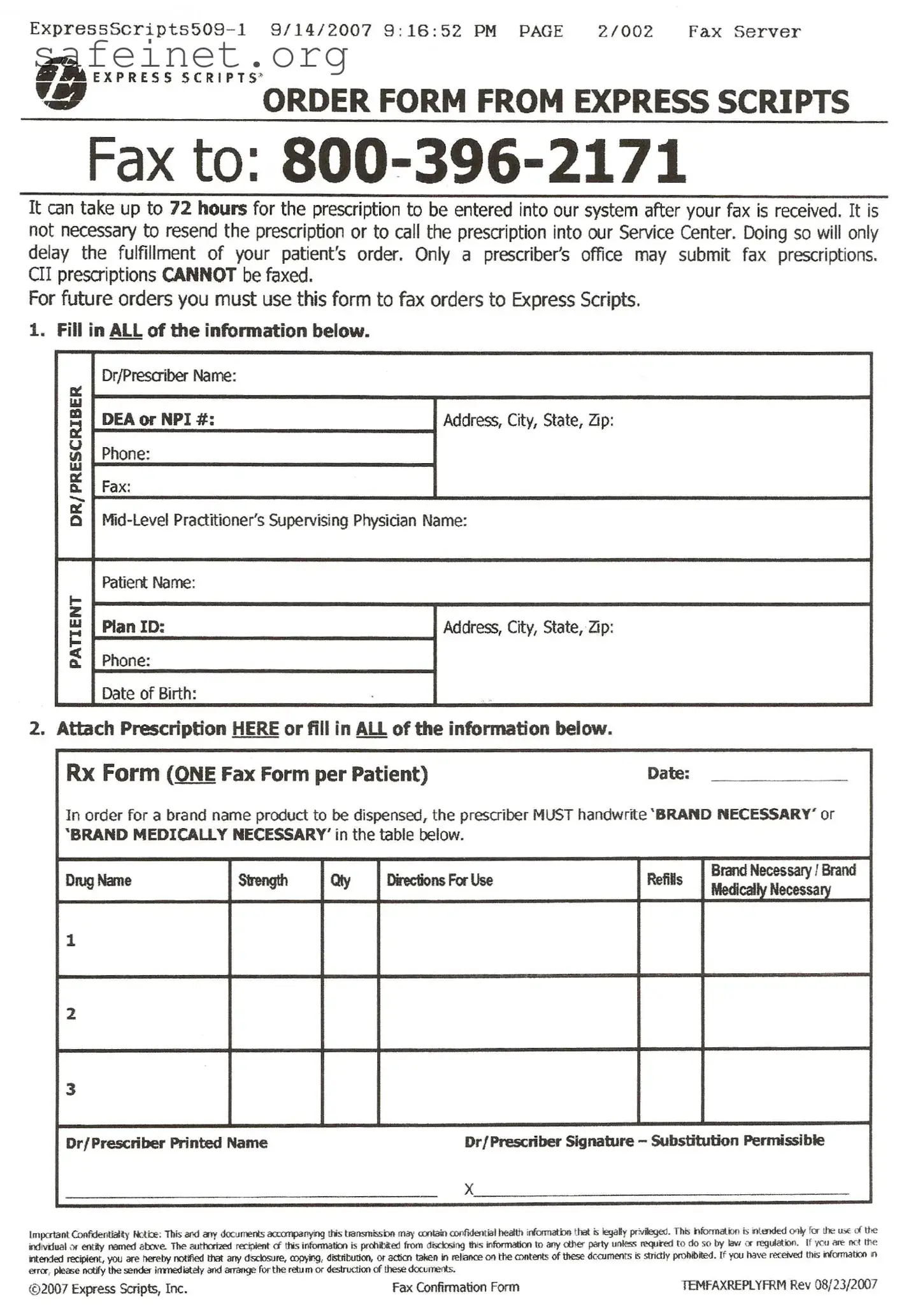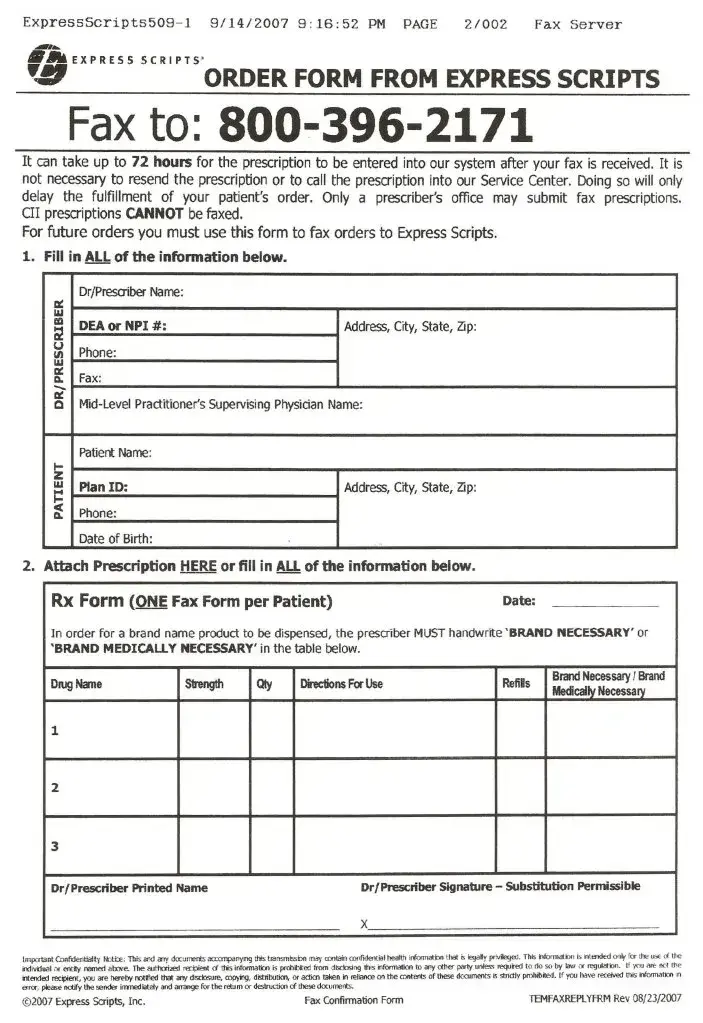What is the Express Scripts form used for?
The Express Scripts form is specifically designed for prescribers to submit fax prescriptions to Express Scripts. It allows medical professionals to order medications for their patients efficiently. Proper completion of the form ensures that prescriptions are processed quickly and accurately.
Who can submit the Express Scripts fax form?
Only prescribers' offices are authorized to submit the fax prescriptions using the Express Scripts form. This ensures that prescriptions are handled by qualified individuals who can verify the medical necessity and appropriateness of the medication prescribed.
Can controlled substances be faxed using this form?
No, prescriptions for Schedule II controlled substances (CII prescriptions) cannot be faxed. This regulation is consistent across many jurisdictions to ensure appropriate controls and measures for handling prescription medications. Prescribers must provide these prescriptions in person.
What information is required on the Express Scripts form?
The form requires detailed information including the prescriber’s name, DEA or NPI number, contact information, and patient details such as name, date of birth, and address. Additionally, specific drug information such as the drug name, strength, quantity, directions for use, and whether the brand name is necessary should be filled out.
How long does it take for a prescription to be processed?
Once the fax is received, it can take up to 72 hours for the prescription to be entered into the Express Scripts system. It is important not to resend or call in the prescription during this time, as it may cause delays in processing.
Is it necessary to call the Service Center after sending a fax?
No, it is not necessary to call the Service Center after submitting a fax. Calling may inadvertently slow down the processing of the prescription. The system is designed to handle incoming faxes efficiently.
What should I write if a brand name drug is necessary?
If a brand name drug is necessary, the prescriber must handwrite "BRAND NECESSARY" or "BRAND MEDICALLY NECESSARY" on the form. This specific instruction allows the pharmacy to dispense the brand name product as prescribed.
What confidentiality measures are in place for transmitted information?
The information contained in the Express Scripts form is considered confidential health information. It is intended solely for the recipient named on the form. Recipients must not disclose this information to any other parties unless required by law. If a sender receives this information in error, they must notify the sender and arrange for its return or destruction.

